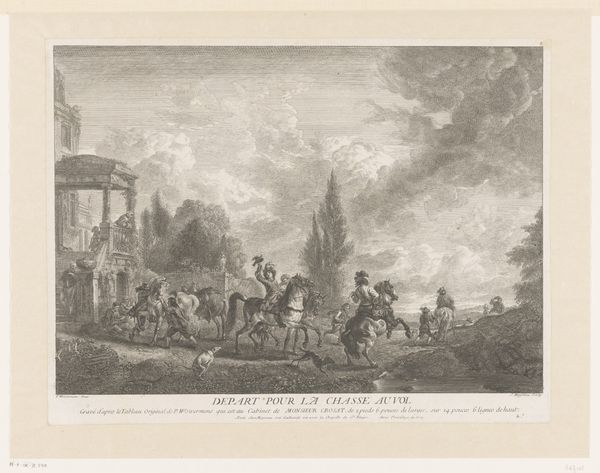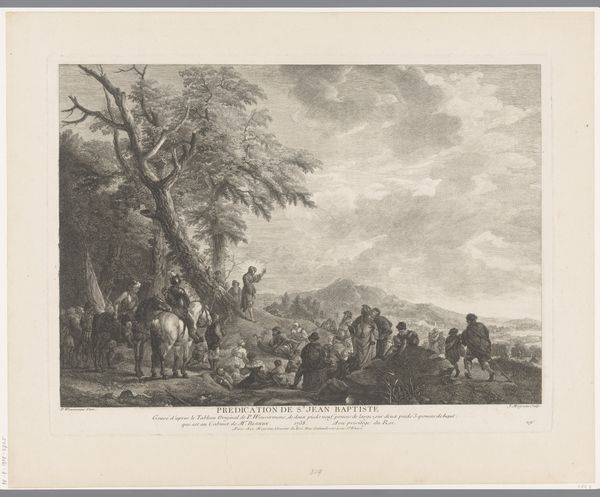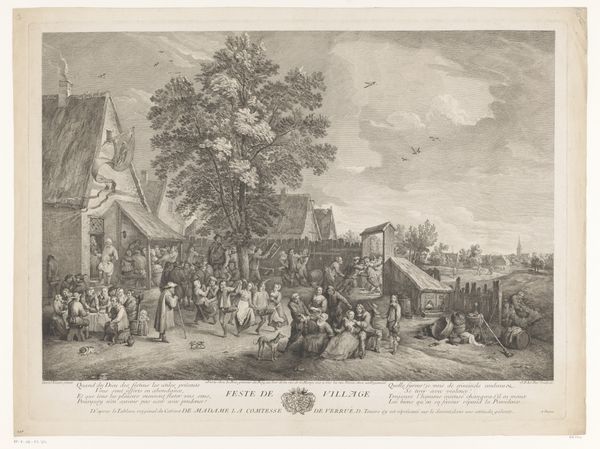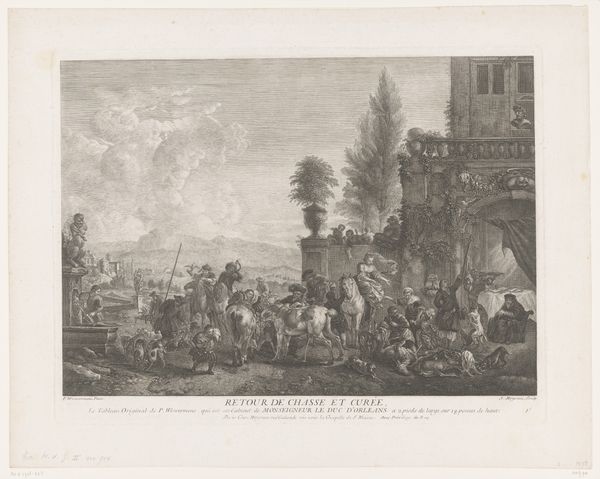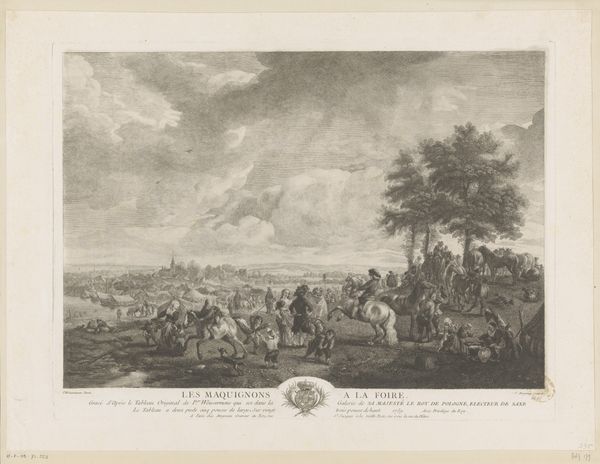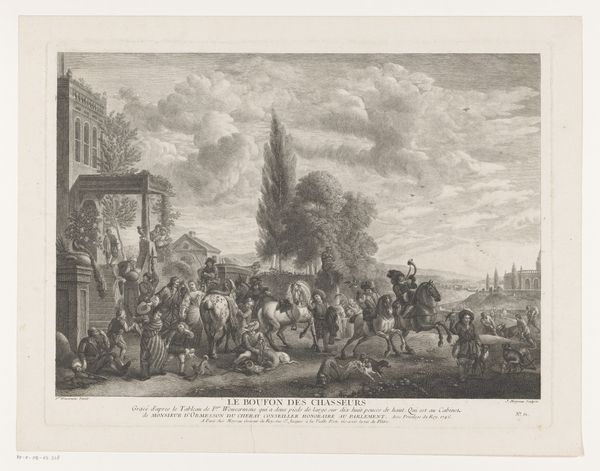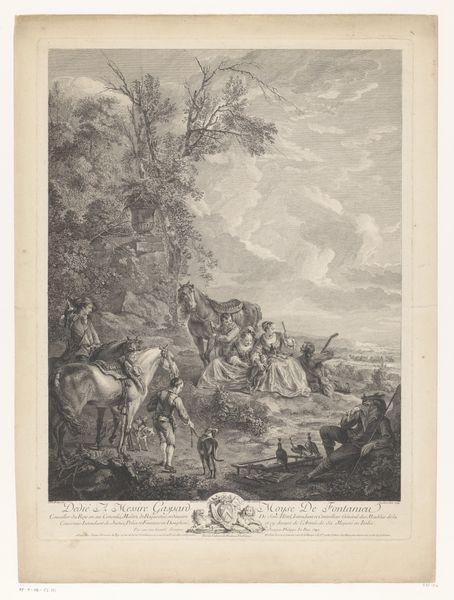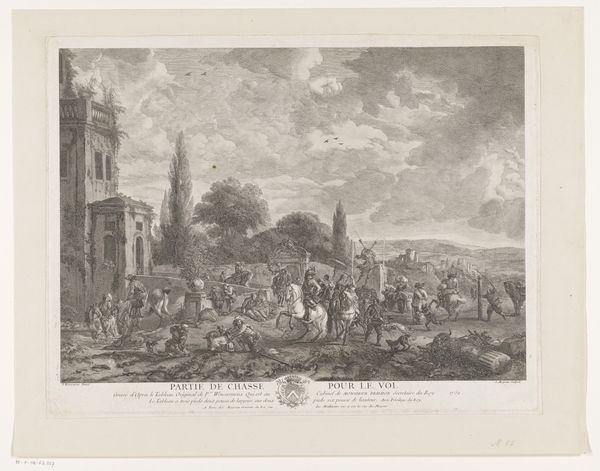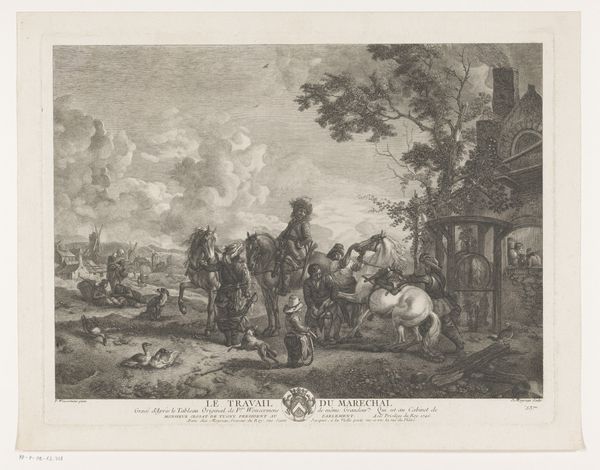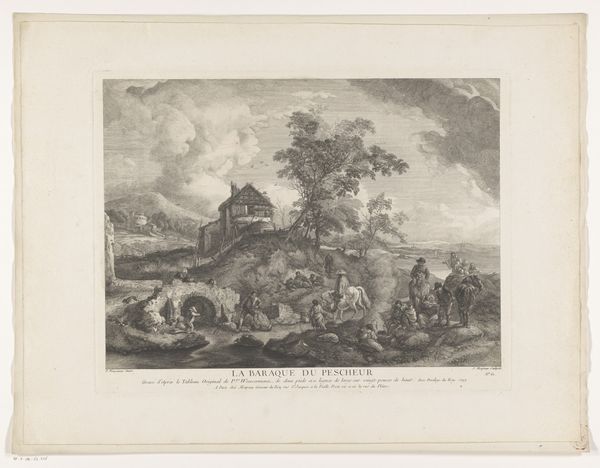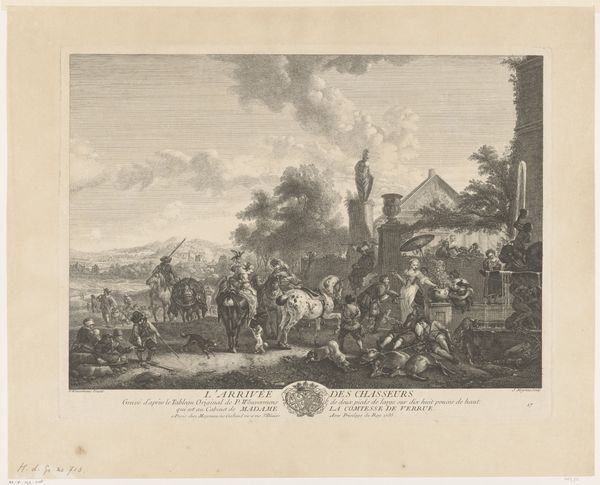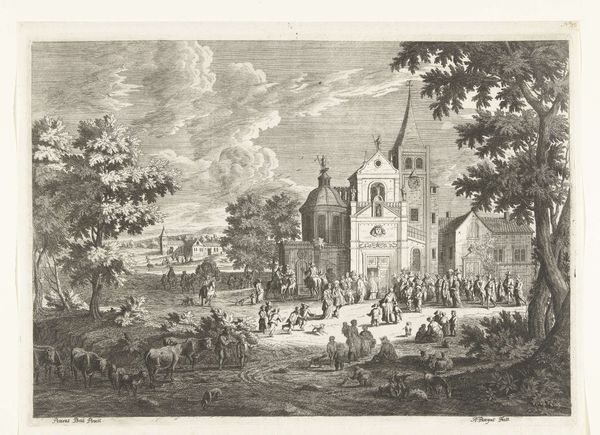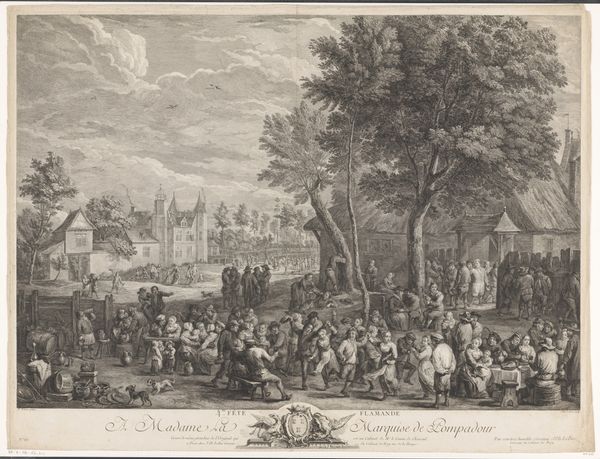
engraving
#
baroque
#
old engraving style
#
landscape
#
horse
#
cityscape
#
genre-painting
#
engraving
Dimensions: height 464 mm, width 355 mm
Copyright: Rijks Museum: Open Domain
Editor: Here we have Jean Moyreau’s "Figuren bij een paardenmarkt", an engraving dating to around 1733-1762. I'm immediately struck by how this image captures a moment of lively commerce, with figures animatedly engaging with horses amidst a rustic backdrop. What stories do you think this scene tells about its time? Curator: That liveliness is key, but let’s consider whose lives are being depicted and for whom this print was made. Genre scenes like these, depicting everyday life, became increasingly popular in the 18th century, especially among the burgeoning middle class. They offer glimpses into societal structures, albeit often curated ones. Does the artist critique or celebrate this horse market, or is it doing both at the same time? Editor: It’s interesting you mention a “curated” glimpse. The presence of the tents and the sheer number of people do suggest a fairly organized event. Do you think this scene is staged to idealize rural life for an urban audience? Curator: Perhaps. The Baroque style, even in engraving, lends a sense of drama and perhaps even spectacle to the everyday. It's also important to remember the role of prints like these in disseminating images and ideas. Who had access to these images and what social messages were being communicated through them? The printing press really democratized access to imagery at the time. Editor: That's a fascinating point about access. It changes how I see the composition now. The details of people's garments and their interactions become less about individual stories and more about presenting a unified social image. Curator: Exactly. The "social image" of these bustling markets might imply economic progress or social stability. The image participates in circulating societal norms, attitudes and aspiration through commercial media. This seemingly simple genre scene opens up to broader issues about 18th century commerce and art's relationship with its audience. Editor: Thank you. I am left contemplating not only the spectacle within the print, but also how it reflects and molds societal perceptions of trade. Curator: And considering that art's historical and cultural footprint in that respect, it reveals something about our present too.
Comments
No comments
Be the first to comment and join the conversation on the ultimate creative platform.
